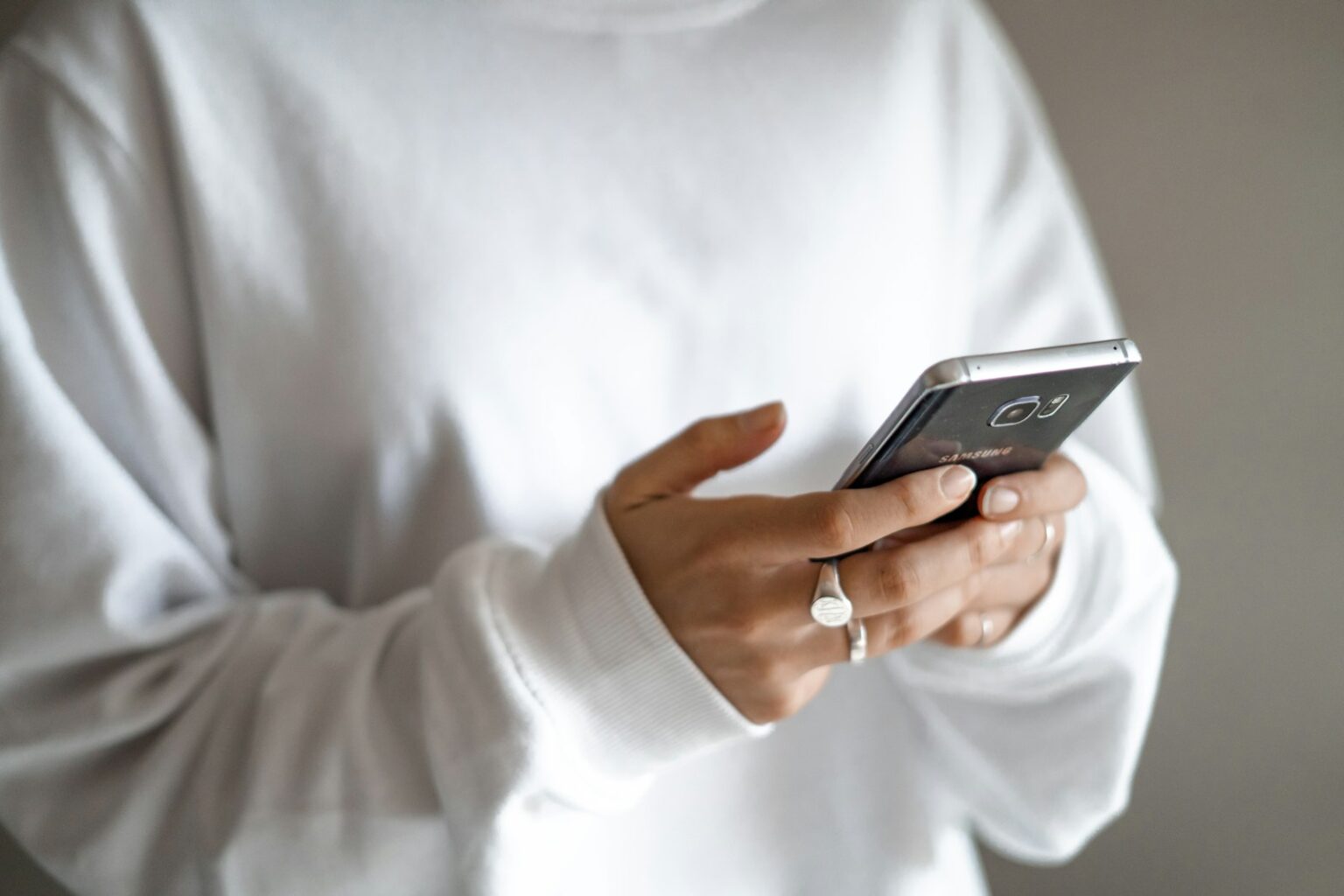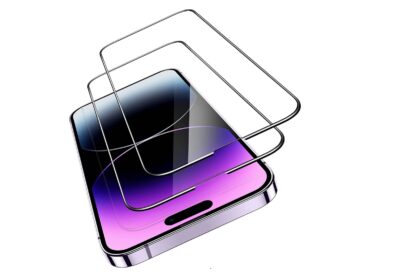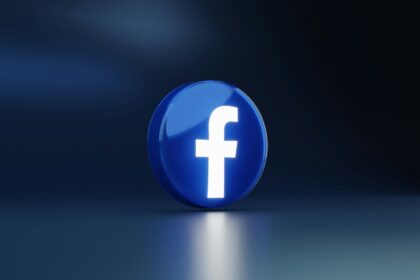The question of When Were Cellphones Invented opens a clear timeline of modern mobile phone history. It begins with Motorola’s Dr. Martin Cooper placing the first public mobile phone call in 1973. That moment set a path that changed how people connect.
By the early 1980s the first consumer device arrived. The Motorola DynaTAC 8000X won FCC approval in 1983 and reached buyers in 1984 at about $3,995 with a short battery and heavy frame. These early phones proved the idea worked and pushed industry momentum worldwide.
Key advances followed quickly: 2G GSM and lithium‑ion batteries in 1991, the first SMS in 1992, and IBM Simon’s touchscreen in 1994. Later breakthroughs — the iPhone in 2007 and the first Android in 2008 — reshaped the market and made smartphones central to daily life. This section shows the time and the way technology stacked up to give us the phones we use today.
From Train Calls to Handhelds: Mobile Roots Before Cellphones
Mobile telephony began long before pocket-sized devices became common. Early experiments shaped the basic idea that a voice call could move with the user and still link into a fixed network.
1926: First mobile telephony service on trains
In 1926 first-class passengers on Deutsche Reichsbahn trains between Berlin and Hamburg could place a phone call. This proof of concept pushed the history of mobile service out of fixed stations and into the transit world.
1946-1956: Car radiotelephones and the first automated vehicle systems
The first car radiotelephone calls in 1946 in Chicago revealed limits: scarce radio channels and capacity problems. By 1956 Sweden launched an automated system for private vehicles using a 40 kg vacuum tube device with a rotary dial.
1969-1987: Nordic cooperation and GSM standardization lay the groundwork
The NMT group in 1969 began cross-border work across Sweden, Denmark, Norway, and Finland. In 1982 eleven European countries met in Stockholm to plan a digital cellular system. By 1987 GSM specs were approved to ensure interoperability, quality, and lower costs.
- Key point: these years taught the industry that a device is only as useful as its network and standards.
1973: Martin Cooper and the First Public Mobile Phone Call
April 1973 marked a bold demonstration that changed how people imagined portable communication.
Dr. Martin Cooper of Motorola placed the world first handheld phone call on a New York sidewalk. He used a 1.1 kg prototype and rang Joel Engel at Bell Labs to prove a person could make a live phone call without a car or fixed line.
This single public demo redefined the way engineers and executives saw mobile devices. It was not a consumer launch but a clear proof that a first mobile handset could work in real life.
- It showed competition among companies would speed development.
- The prototype’s weight highlighted design challenges ahead.
- The event pushed investment and shifted history toward handheld use.
| Item | Detail | Impact |
|---|---|---|
| Date | April 1973 | Established a public milestone in mobile phone history |
| Person | Martin Cooper | Credited with the first handheld public call |
| Prototype | 1.1 kg Motorola handset | Proved portability but noted design limits |
| Recipient | Joel Engel, Bell Labs | Highlighted industry rivalry and urgency |
1983-1984: The First Mobile Phone Hits the Market
In 1983–1984 the idea of a personal mobile device crossed into retail reality. The shift put the first mobile phone into the hands of buyers, though the product looked more like a tool for the wealthy than a mass consumer item. This launch proved a market for portable calling existed and set expectations for future design and cost reductions.
Motorola DynaTAC 8000X “The Brick”: price, battery life, and early users
The Motorola DynaTAC 8000X won FCC approval in 1983 and reached stores in 1984 at roughly $3,995–$4,000. Weighing close to two pounds, the phone offered about 30 minutes of talk time per charge. Early owners accepted those limits because having a phone you could carry changed daily work and travel.
Ameritech’s 1G launch in the U.S. gave the device real network support. The DynaTAC’s large battery and heavy shell earned it the nickname the Brick, but it also proved that phones could leave cars and offices behind. As an aspirational tool for executives, doctors, and business travelers, it showed the world what portable communication could be.
- Reality check: retail price made the product rare.
- Technical note: short battery life limited continuous use.
- Legacy: the device validated years of R&D and set a baseline for future phones.
1991-1992: 2G, Lithium-Ion Batteries, and the Moment Texting Began
A short stretch between 1991 and 1992 fused digital standards and better power storage, changing what a phone could do.
2G networks launched in 1991 in Finland, replacing analog systems and improving call quality and capacity. The digital network also made new services possible, opening the path to mobile internet and email on small screens.
That same year, Sony helped commercialize rechargeable lithium‑ion battery packs. Longer life and faster charging made portable phones practical for daily use and wider adoption by everyday users.
In 1992 the first SMS arrived. Engineer Neil Papworth sent “Merry Christmas” to a Vodafone director, turning a basic cell into a simple messaging tool. That small text seeded a habit that millions would adopt.
- Digital networks unlocked services beyond voice.
- Better batteries extended usable time between charges.
- SMS transformed the phone from a call device into a communication platform.
| Year | Advance | Impact |
|---|---|---|
| 1991 | 2G (GSM) & lithium‑ion | Improved capacity, call quality, and battery life |
| 1992 | First SMS | Shifted user habits toward short messaging |
1992-1994: The First Smartphone Arrives
The first smartphone claim belongs to a product that mixed a planner and a communication tool into one handheld. IBM announced Simon in 1992 and shipped it in 1994 for about $1,099.
Simon sold roughly 50,000 units in its first six months. That early market response proved a demand existed for phones that did more than call.
IBM Simon: features that pointed to the future
Simon had a stylus-driven touch screen and a monochrome screen. It offered built-in apps like calendar, address book, and notes—an early version of the app experience we expect on modern devices.
The unit supported email and fax functions, showing a single phone could handle varied work tasks. Battery life was modest, and the interface required a stylus rather than finger touch.
- Bridge: Simon connected a PDA and a mobile phone in one device.
- Apps: Calendar, calculator, and messaging hinted at future platforms.
- Impact: Though niche, the product validated the idea of a daily companion phone.
| Year | Price | Units Sold (6 mo) |
|---|---|---|
| 1994 | $1,099 | ~50,000 |
| Display | Monochrome LCD | Stylus-driven touch |
1997-2001: When Phones Got Smart Features
By the late 1990s phones began packing features that made them useful beyond voice calls. The shift focused the industry on software, services, and small apps that people wanted to use every day.
1997 saw Ericsson label its GS88 prototype a smartphone, a term that stuck as devices added richer functions. In the same period Nokia shipped the 6110 with Snake, proving a simple game could create lasting user habits.
Camera, GPS, and the web arrive
Japan led the world with early camera phones. Kyocera’s VP-210 (1999) added a front camera, and Sharp’s J-SH04 (2000) became the first mass-market model with a built-in camera.
GPS also appeared early. The Benefon Esc integrated location tools before navigation apps were common, expanding a phone’s role to directions and tracking.
In 2001 3G networks made the internet truly portable for the first time. Users could browse, email, and download on the move. Some handsets offered a small keyboard to help with messaging and mobile email.
- 1997: “smartphone” term used for GS88.
- 1997: Snake on Nokia 6110 popularized mobile games.
- 1999–2000: Early camera and GPS phones in Japan and Europe.
- 2001: 3G brings web access to phones.
| Year | Key Device or Tech | Feature | Impact on Users |
|---|---|---|---|
| 1997 | Ericsson GS88 / Nokia 6110 | “Smartphone” term / Snake game | Shift to software; gaming becomes mainstream |
| 1999 | Kyocera VP-210 / Benefon Esc | Front camera / GPS | New uses: selfies, video calls, and navigation |
| 2000–2001 | Sharp J-SH04 / 3G networks | Mass-market camera phone / Mobile internet | Wider photo sharing and real web access for users |
2007: Apple Joins the Game and Redefines the Smartphone
Apple’s 2007 launch rewrote expectations for what a handheld device could deliver. The company combined a large multi-touch screen, full internet access, iPod features, and an integrated camera into one polished product.
Touch screen, full internet, and the app ecosystem boom
The device made browsing feel natural on a pocket gadget. Its touch-first design let people tap, pinch, and swipe with ease.
Software and hardware worked as one. That smooth fit raised the bar for design and performance across the technology world.
In 2008 the App Store opened and unlocked third-party apps at scale. Developers quickly built tools and games that expanded what a phone could do.
Market impact in the United States and worldwide
Sales showed strong demand: over 1.4 million phones sold in year one, growing to 11.6 million in 2008. This pace signaled that the US market and global buyers wanted modern smartphones.
The launch also reshaped UI standards. Gestures, home-screen layouts, and app-driven flows became common expectations for users.
- Design: seamless integration of apps, media, and calls.
- Economy: the App Store created a new software market.
- Impact: cameras and media playback were reimagined for daily life.
| Year | Shipments | Key Impact |
|---|---|---|
| 2007 | 1.4 million phones | Validated touch-first design and full internet use |
| 2008 | 11.6 million phones | App Store launched a global developer ecosystem |
2008: The First Android Smartphone
The HTC Dream (sold as the T‑Mobile G1) arrived in 2008 and introduced the first android handset to consumers.
It shipped with Android 1.0 version, a capacitive screen, and a slide‑out QWERTY keyboard. A small trackball gave precise navigation while users adapted to touch gestures.
The Android Market launched the same year, opening a new app distribution channel. This allowed developers to publish software on an open platform and accelerated feature growth across many phone models.
- Design: blended a physical keyboard with a modern touch interface to ease adoption.
- Platform: an open approach let multiple makers build diverse phones.
- Impact: the debut proved alternative ecosystems could compete and expand the market.
| Item | Detail | Why it mattered |
|---|---|---|
| Device | HTC Dream / T‑Mobile G1 | First retail Android smartphone |
| Hardware | Slide‑out keyboard, trackball | Comfort for users switching from older phones |
| Software | Android 1.0 & Android Market | Started an open app ecosystem for developers |
2009-2019: 4G to 5G and the Always-Connected World
The 2009–2019 decade turned mobile networks into always-on platforms that reshaped daily life and work. Early 4G rollouts and later 5G pilots cut latency and raised speeds, changing how people spend their time and access services.
4G speeds supercharge apps, video, and business
Commercial 4G service began in 2009 with TeliaSonera, and O2 demonstrated LTE at up to 150 Mbps that same year. Faster mobile internet unlocked HD streaming, cloud apps, and real‑time collaboration on a handheld device.
Uploads improved, so phone cameras could produce share‑ready photos and video. Messaging apps like WhatsApp, launched in 2009, flourished on this bandwidth and reshaped communication norms worldwide.
5G debuts and reshapes devices, networks, and users’ expectations
By 2019 carriers such as Verizon began 5G service in parts of Chicago and Minneapolis and the first 5G phones appeared. Lower latency and higher capacity opened doors for AR, IoT, and new device classes.
Enterprises moved to mobile-first workflows, and phones became hubs that link apps, sensors, and services. The decade cemented the smartphone as the primary internet gateway for billions.
- Key effects: streaming, mobile commerce, and enterprise mobility scaled rapidly.
- Result: an always-connected world where devices drive daily routines.
| Year | Milestone | Impact |
|---|---|---|
| 2009 | TeliaSonera 4G; O2 LTE demo; WhatsApp launch | Higher speeds enable apps and real-time messaging |
| 2014–2016 | 4G mainstream | Mobile video and cloud apps become normal |
| 2019 | 5G rollouts and first 5G phones | Lower latency enables AR and IoT growth |
When Were Cellphones Invented: Key Dates at a Glance
A short list of dates captures the rapid pace of change in modern phone history.
1973 — First public handheld call
Dr. Martin Cooper placed the first public handheld phone call in 1973. That moment proved true mobility worked outside vehicles.
1983–1984 — First mobile phone sold
The Motorola DynaTAC received approval and reached buyers in 1984, marking the arrival of the first mobile phone on the retail market.
1992–1994 — Early smartphone milestones
IBM announced Simon in 1992 and sold units by 1994. This era also saw the first SMS and introduced the idea of the first smartphone.
2000 — Camera phone goes mass-market
Japan led with mass-market camera phone models around 2000, starting a photo-first shift in mobile culture.
2007–2008 — Modern platforms reshape the market
Apple’s 2007 launch reset design expectations. In 2008 the HTC Dream arrived as the first android device, broadening choice and platforms.
2009–2019 — Networks remake what phones do
4G and early 5G work between 2009 and 2019 turned handsets into always‑connected hubs for work and play.
- Quick take: a few key years show how fast advances stacked and changed the market.
| Year | Event | Impact |
|---|---|---|
| 1973 | First public handheld call | Proof of mobile voice outside vehicles |
| 1984 | Retail DynaTAC | First mobile phone sold to consumers |
| 1994 | IBM Simon sales | Early apps and email on a handheld |
| 2007–2008 | iPhone & HTC Dream | Touch UI and open platform era |
Conclusion
A century of small steps — from train telephony and car radios to Martin Cooper’s world first handheld call — reshaped how we connect. Early limits in weight and battery life gave way to devices that fit pockets and routines.
IBM’s Simon showed the first smartphone idea: a touch screen with apps, email, and sms before mass adoption. Camera innovation turned the mobile phone into a pocket camera, and the iPhone and Android paths scaled the market.
As networks progressed from 2G to 5G, the internet moved into daily use for users and business. Today, smartphones blend computing, cameras, and communication in one device — a compact result of years of industry effort.
FAQ
What counts as the first public mobile phone call?
The first widely recognized public handheld mobile phone call was made by Motorola engineer Martin Cooper in 1973. He used a prototype DynaTAC to call a rival at Bell Labs, proving a portable, voice-capable device could work outside a car or fixed installation.
Were there mobile telephone services before handheld phones?
Yes. Mobile telephony began decades earlier with train-based systems in the 1920s and car radiotelephones from the 1940s. Those systems relied on bulky radio equipment and vehicle installations rather than pocketable devices.
When did the first commercial handheld mobile phone reach consumers?
The Motorola DynaTAC 8000X launched commercially in 1983–1984. It carried a premium price, limited battery life, and a hefty form factor, but it marked the first mass-market handheld mobile phone available to consumers.
How did battery technology influence early mobile phones?
Early phones used heavy, short-lived batteries that limited talk time and portability. The introduction of lithium-ion batteries in the early 1990s boosted energy density, improved battery life, and helped phones become lighter and more practical for everyday use.
When and how did texting begin on mobile phones?
Texting began with SMS over 2G networks. The first documented SMS—sent in 1992—read “Merry Christmas.” 2G digital networks made SMS reliable and affordable, helping messaging become a core mobile behavior.
Which device is considered the first smartphone?
The IBM Simon, introduced in 1992 and sold in 1994, is often called the first smartphone. It combined a touch screen, email, PDA features, and basic apps in one device—though it arrived before broad market readiness and modern app stores.
When did camera phones first appear?
Camera phones appeared commercially in Japan around the year 2000 and then spread globally. These devices fused imaging with telephony, reshaping social use, news, and the mobile content ecosystem.
How did mobile gaming and early smart features develop?
In the late 1990s and early 2000s, manufacturers added features like calendars, email, and simple games—Nokia’s Snake became an iconic early mobile title. Those smart features paved the way for richer apps once faster networks arrived.
Why is 2007 a turning point for smartphones?
Apple’s iPhone in 2007 redefined the smartphone with a capacitive touch screen, a full mobile web experience, and a platform that later supported a vast app ecosystem. The iPhone accelerated adoption and set new design and usability standards worldwide.
When did Android enter the market?
The first Android smartphone arrived in 2008. Android provided an open platform alternative to iOS, enabling many manufacturers to build feature-rich devices and expand the smartphone market rapidly.
How did 4G and 5G change mobile use for consumers and business?
4G, introduced in the late 2000s and 2010s, delivered high-speed mobile data that enabled video streaming, richer apps, and new business models. 5G, rolling out from 2019 onward, further increased speeds, lowered latency, and supported massive device density, changing expectations for real-time services and connected devices.
What are the key dates to remember in mobile phone history?
Key milestones include 1973 (first public handheld call by Martin Cooper), 1983–84 (Motorola DynaTAC commercial launch), 1992–94 (SMS growth and IBM Simon smartphone), about 2000 (first mainstream camera phones in Japan), 2007 (Apple iPhone), and 2008 (first Android smartphones).
























